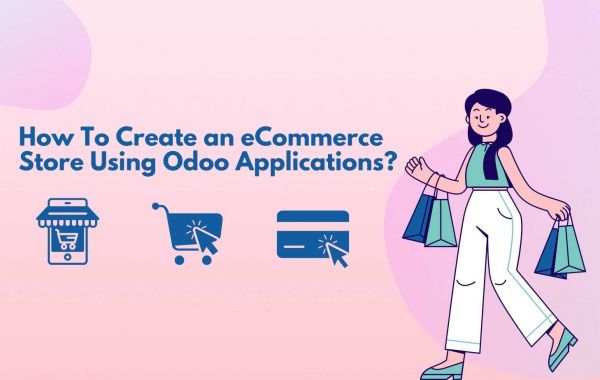Having an online store not only increases the visibility of your business but also increases the customer interaction level. Since every person is online either browsing social media or working remotely, one thing is common between them, they shop online, especially after the pandemic.
This trend has forced businesses to speed up their initiative to host online stores and build a presence online. It has also increased the need for having a professional website that showcases everything from links to social media pages to product catalogs and multipayment options. But, people don’t have enough budget to outsource expertise.
By taking these and many concerns in hand, I have crafted this article that addresses all major concerns and simultaneously provides an overview of the online application Odoo eCommerce, one of the many Odoo ERP Solutions designed to support every business operation.
It is an open-sourced application, by using which you can create your very own eCommerce store, optimize it using pre-integrated SEO features, and customize the view by using drag-and-drop features.
One of the essential things about this app is, you can get it integrated with your Odoo CRM within minutes. However, if you want to customize the features then use the configuration setting. Hold on, if you don’t have any technical expertise then you can search for a local or remote Odoo CRM Consultant to help you set up the system. Besides, you can utilize the youtube how-tos’ videos crafted by Odoo teams for the sole purpose of Odoo CRM Training.
Step By Step Guide To Setup Your eCommerce Store
Unlike other websites, Odoo offers a simple and easy-to-use interface with blocks and online form features. This makes a website, product catalog, and featured product pages creation super easy. Here is a guide that you can follow to set up your page with minimum technical assistance.
1. Select Applications
The first step that you have to perform is to select the application that you’ll need to create, organize and run your online store. If you have no idea then here are some recommendations to start with, select eCommerce and Website. This will help you set up the store. For order, stock, and invoice management you will also require Inventory And Sales. Using these, with the combination of the initial two will be enough. Hold on! before buying a subscription you can take a 15 days trial.
2. Website Theme
The second step is to select your website theme. At this point, you can go with the pre-build themes and customize them to match your taste. And the best part is, you won’t have to install anything because every action can be performed online. Not only that, you can edit the preface, anytime you want without going back and forth like in WordPress.
3. Product pages
After deciding on the home-page theme and design the layout, the next step is to create a catalog of products. Remember, Odoo doesn’t import data, so you’d be creating the product pages by yourself. For this, you have to edit the ‘shop’ option available in the navigation bar and select the feature that you want to be displayed with every product. Browse down the online form and check options your want, e.g. product varients, pricing list, tax included or excluded option, shipping cost, etc.
While you are creating product pages, you can add pictures, set costs along with extra pricing with limited duration, add an attribute to the product such as colors, mention quantity in hand, or set a custom Threshold.
4. Optimize Website
This is the most important step, as it will help you reach the desired target audience. For this, you won’t have to go into details, just click on the pages and add relevant keywords. Since it is pre-integrated with SEO, you won’t have to make efforts. Along with this, you can access the report and statistics of your eCommerce store right from your Odoo CRM dashboard.
Feature of Odoo eCommerce
- One feature that I like most in Odoo is it offered by Techloyce.com is a Drag-and-Drop editing module that reduces the need for going back and forth to make minor adjustments either in the product display layout or on the home page.
- Secondly, you can use pre-build themes for HomePage and modify the layout of the featured pages as you want. Moreover, you add the feature of cross-selling, upselling, and recommendations.
- Another essential thing is, it offers professional assistance in which you can add product attributes, create variations, offer discounts, set discount duration, and add categories. You can also optimize the pages by inserting keywords and optimize the layout for multiple screens e.g. mobile, tabs, laptop, and desktop, etc.
- Lastly, it offers multiple online payments support along with shipping options including USP, DHL, FedEx, USPS, etc. Moreover, you can integrate other pre-build Odoo CRM Integrations and applications to support invoice and order tracking.








